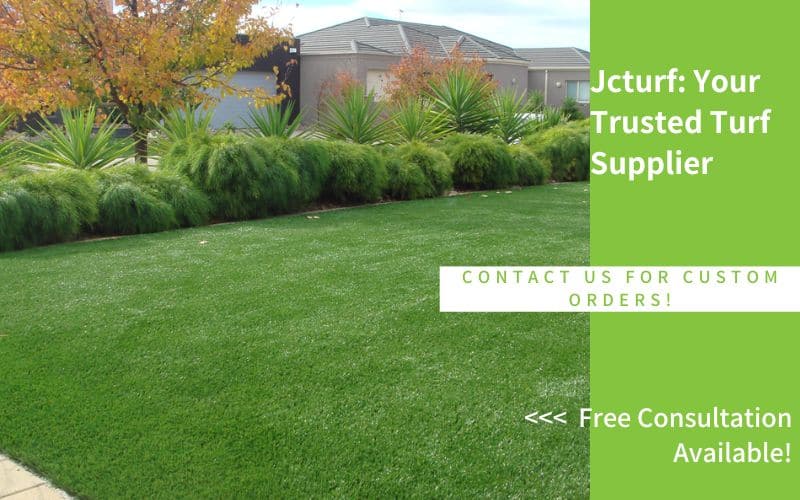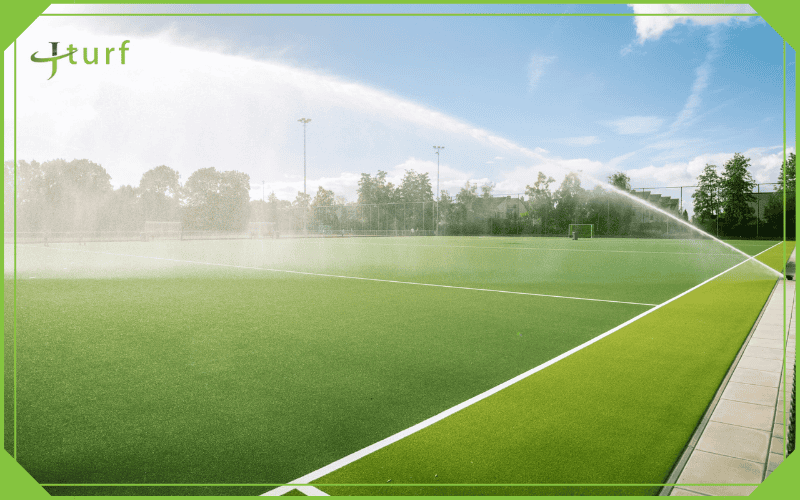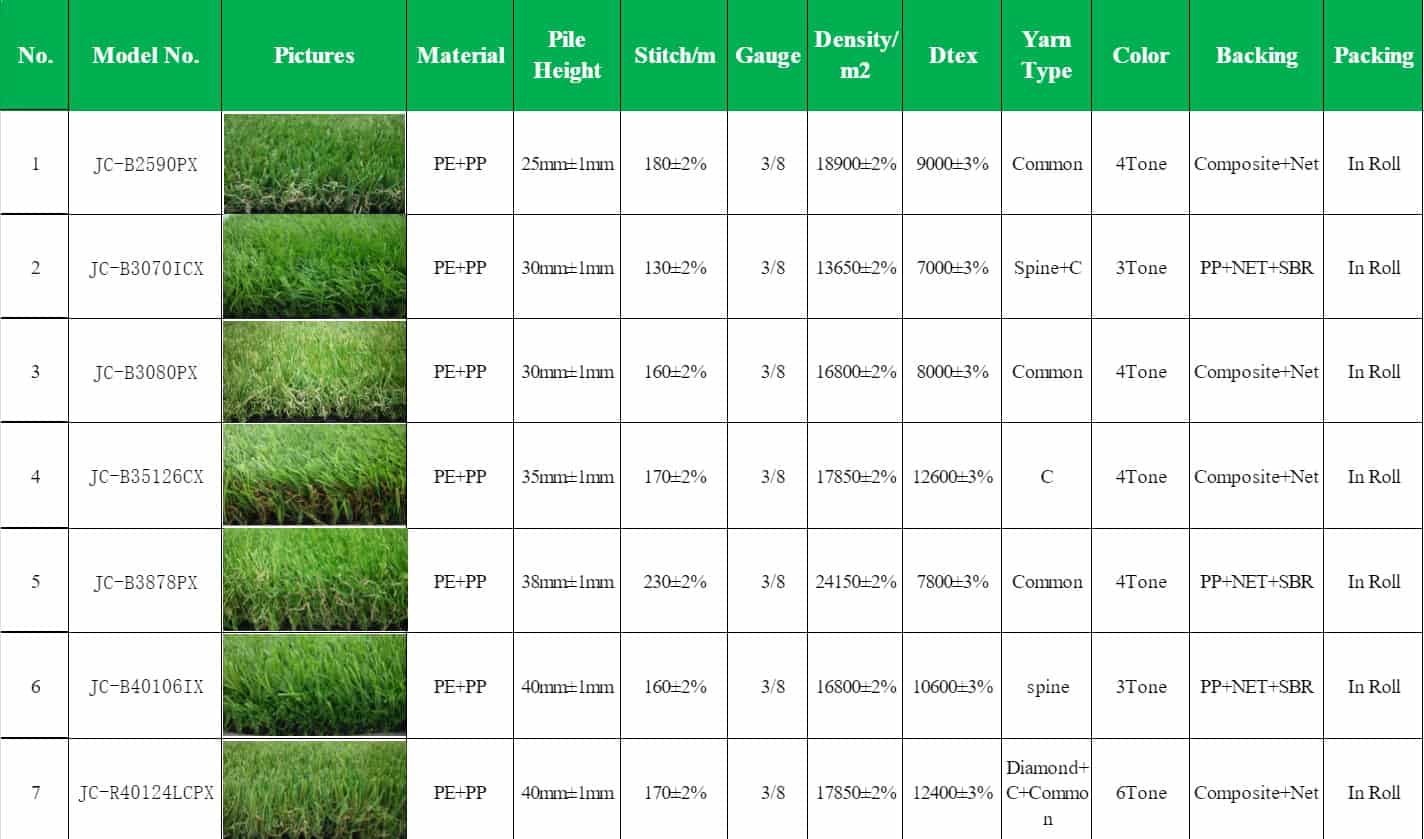Yes — environmentally friendly artificial grass does exist.
Today’s sustainable artificial turf is not the same as the older generations that were made almost entirely of petroleum-based plastics. Modern products are designed with eco-friendly materials such as plant-based polymers, soybean oil backings, and recyclable fibers, and they are built to last longer with far less maintenance.
We’ll explore what makes artificial grass sustainable, the different types of eco-friendly turf, and how it helps the environment through water conservation, reduced chemical use, and lower emissions. We’ll also compare it directly to natural grass, outline the practical benefits of sustainable artificial turf.
If you’re considering an eco-friendly alternative for your landscape, this guide will give you everything you need to know before choosing sustainable artificial grass.
What Is Sustainable Artificial Grass?
Sustainable artificial grass is a newer generation of turf designed to be eco-friendly from start to finish. It uses renewable or recyclable materials, reduces the need for water and chemicals, and lasts longer with less maintenance. In other words, it’s not only green in color — it’s green in impact.
Key differences from traditional artificial turf
Older artificial grass:
- Made mostly with petroleum-based plastics.
- Hard to recycle and often ended up in landfills.
- Focused only on appearance and durability.
Sustainable artificial grass:
- Uses renewable, safer materials.
- Designed for recyclability.
- Lower environmental footprint over its lifetime.
Types of Sustainable Artificial Grass
Not all artificial grass is made the same way. When it comes to sustainability, there are several types of turf products that stand out because of their materials, manufacturing process, or recyclability. Here are the main categories:
1. Plant-Based Artificial Grass
This type of turf uses bio-based polymers made from renewable resources such as sugarcane or corn. By replacing petroleum-based plastics with plant-derived alternatives, it reduces dependence on fossil fuels and lowers carbon emissions. Plant-based turf is a good choice for homeowners and developers looking for a greener alternative without sacrificing durability.
2. Soybean Oil–Backed Turf
Traditional turf backings were made with petroleum. In sustainable versions, manufacturers use soybean oil or other plant oils in the backing system. This not only reduces fossil fuel use but also supports sustainable farming industries. It’s a practical way to combine performance with renewable materials.
3. Recyclable Turf Systems
Some artificial grasses are designed with fully recyclable fibers and backing layers, meaning that when the turf reaches the end of its life (15–25 years), it can be processed and reused instead of going to a landfill. These closed-loop systems are an important step toward a circular economy in landscaping.
4. Hybrid Eco-Friendly Turf
Hybrid systems combine natural grass with synthetic fibers. They require less water and fewer chemicals than a full natural lawn but still maintain a “living” element. These are often used in sports fields where both durability and natural aesthetics matter.
5. Turf with Organic or Natural Infill
Sustainability doesn’t stop with the turf itself. Many eco-friendly products now use organic infill materials such as cork, coconut husk, or sand instead of crumb rubber. Organic infills are safer, non-toxic, and help the grass feel cooler underfoot during summer.
How Does Sustainable Artificial Grass Help the Environment?
1. Water Conservation: Natural lawns demand constant irrigation. A household can save 20,000+ gallons of water yearly, while sports fields save over 200,000 gallons, making a major difference in drought-prone regions.
2. Reduced Chemical Use: Artificial grass removes the need for fertilizers, pesticides, and herbicides, preventing harmful runoff and protecting soil, water, kids, pets, and local ecosystems.
3. Lower Carbon Emissions: Lawnmowers and trimmers emit heavy greenhouse gases — one hour of mowing equals driving 300 miles. Artificial grass eliminates this, cutting emissions and noise pollution.
4. Waste Reduction and Recycling: New turf products use recyclable fibers and backings, so when replaced after 15–25 years, they can be reused instead of dumped in landfills.
5. Supporting Sustainable Agriculture: Innovations like soybean oil backings and plant-based polymers reduce fossil fuel dependence and support renewable farming industries.
Is Sustainable Artificial Grass Better Than Natural Grass?
Environmental Footprint
- Water use: Natural lawns consume thousands of gallons each year; artificial grass needs only occasional rinsing.
- Chemicals: Fertilizers, herbicides, and pesticides are essential for natural grass but eliminated with turf.
- Emissions: Mowing a lawn for one hour emits as much pollution as driving a car 300 miles; artificial grass removes that burden.
Addressing Misconceptions
Some worry artificial turf is “just plastic.” In reality, sustainable turf uses plant-based materials, recyclable systems, and eco-certifications, making it far less harmful than traditional synthetic grass. Transparency and certifications like USDA BioPreferred help distinguish genuine eco-friendly products from greenwashing.
Lifecycle and Long-Term Impact
Natural grass requires constant upkeep and replanting. Sustainable artificial grass lasts 15–25 years, and many products can be recycled at the end of their lifespan. This means less waste, fewer resources used over time, and a significantly lower overall footprint.
Sustainable Artificial Grass Benefits for Homeowners and Families
Safe and Non-Toxic: Modern sustainable turf is lead-free, allergen-free, and pet-friendly. Families can let kids and pets play outside without worrying about pesticides, fertilizers, or hidden toxins.
Low Maintenance: Forget mowing, fertilizing, or constant watering. Artificial grass only needs occasional rinsing and light brushing, saving both time and effort for busy households.
Cost Savings Over Time: While installation costs more upfront, homeowners save year after year on water bills, lawn equipment, and chemical treatments. Over its 15–25 year lifespan, turf pays for itself.
Always Green and Customizable: Unlike natural grass that browns in drought or winter, artificial grass stays lush and green all year. Homeowners can choose from different textures, colors, and lengths to match their yard’s style.
Sustainable Artificial Grass Cost
Sustainable artificial grass usually costs more to install than natural grass. The price varies by quality, size, and installation, but most homeowners spend $5–$20 per square foot. This covers materials, labor, base preparation, and infill.
Long-Term Savings
What looks expensive at first often pays off over time. With turf, you eliminate:
- Water bills for irrigation (saving thousands of gallons yearly).
- Fertilizers, pesticides, and herbicides.
- Maintenance costs for mowing, reseeding, and equipment.
Over a 15–25 year lifespan, these savings typically outweigh the initial installation cost.
Value Beyond Money
Cost isn’t just about dollars. Homeowners also gain:
- Time saved from no mowing or watering.
- Consistent curb appeal with a lawn that stays green year-round.
- Eco-value, knowing their choice reduces water use, emissions, and chemicals.
In short, while sustainable artificial grass requires a higher upfront investment, it’s a cost-effective solution in the long run.
How Much Water and Energy Can You Really Save
Water Savings
- 20,000–22,000 gallons per household per year can be saved when replacing a natural lawn with artificial grass.
- 200,000+ gallons annually for one full-size sports field or large commercial landscape.
These savings come from one simple fact: natural grass needs constant irrigation to stay green. In hot or dry regions, watering a lawn can account for up to 70% of a household’s water usage. Artificial turf only needs the occasional rinse to remove dust or debris. For families, this means smaller utility bills; for communities, it means less pressure on limited freshwater resources.
Energy Efficiency
- 0 hours of mowing per week — traditional lawns often require 30–40 mowings per year.
- No irrigation pumps or sprinkler systems running daily.
All of this translates to measurable energy savings. Natural lawns require constant pumping, filtering, and treating of water, all of which consume electricity. Meanwhile, mowing equipment alone burns over 800 million gallons of gasoline annually in the U.S. With turf, these energy demands vanish, reducing both costs and reliance on fossil fuels.
Reduced Emissions
- One hour of mowing = driving 300+ miles in terms of emissions, according to the EPA.
- By removing the need for mowing, turf directly eliminates this pollution.
Beyond greenhouse gases, lawnmowers also release nitrogen oxides and volatile organic compounds that contribute to smog. Replacing natural grass with sustainable turf not only reduces emissions but also cuts down on air pollution and noise in neighborhoods.
Can Artificial Grass Be Used Beyond Residential Lawns?
Yes. Sustainable artificial grass goes far beyond backyards and is now used in many settings where natural grass is costly or impractical.
- Playgrounds and Schools: Provides a soft, cushioned, non-toxic surface that reduces injuries and keeps play areas clean year-round, without mud or chemicals.
- Sports Fields and Recreational Areas: Delivers a durable, consistent surface for soccer, golf, and more. Withstands heavy use and saves water and maintenance compared to natural grass.
- Rooftops, Terraces, and Balconies: Lightweight turf brings greenery to urban spaces where soil and real grass can’t thrive, adding comfort and style with no upkeep.
- Commercial Properties: Used in offices, retail centers, and courtyards to boost curb appeal while lowering maintenance costs and supporting sustainability goals.
- Indoor Design Projects: Ideal for gyms, exhibitions, pet spaces, and creative interiors, adding natural aesthetics without irrigation or sunlight.
Best Sustainable Artificial Turf Supplier You Can Trust
Choosing the right turf is not only about appearance — it’s about making a long-term sustainable choice. At JCturf, we design and manufacture artificial grass with the environment in mind. From plant-based polymers and soybean oil backings to recyclable turf systems, our products help homeowners, schools, and businesses reduce water use, cut emissions, and create safe, eco-friendly landscapes.
As both a manufacturer and supplier, we control every step of the process — from material sourcing to final installation support — ensuring that you get turf that is durable, safe, and truly sustainable.
If you are ready to upgrade to a greener lawn or transform your project with sustainable artificial grass, get in touch with JCturf today. Request a free consultation or sample, and see why more customers are choosing us as their trusted artificial turf partner.



